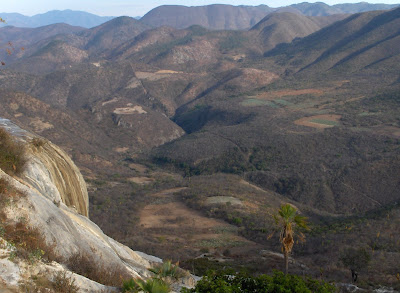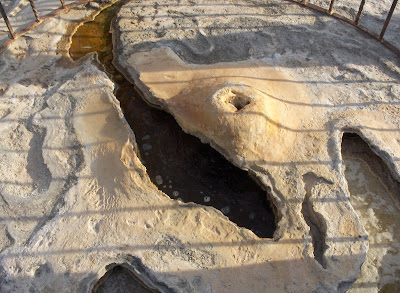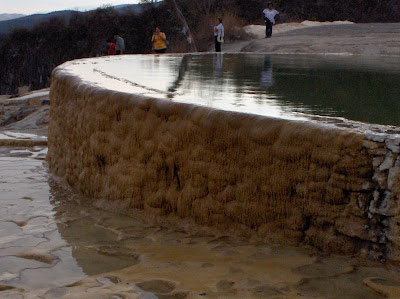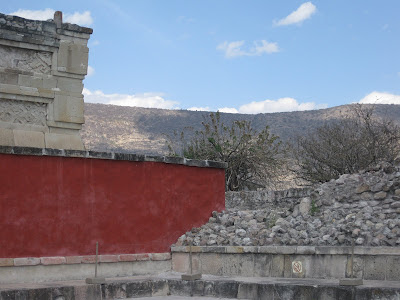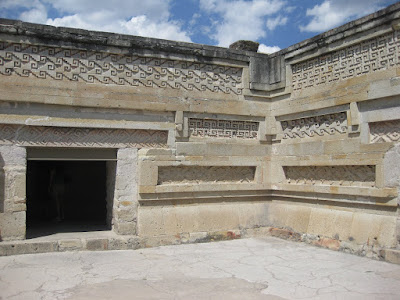Visiting Hierve el Agua
The final site on the day that began with a visit to the magnificent tree at Tule ended with a ride out to a second fascinating natural phenomenon, Hierve el Agua. 'Hierve el agua' literally means 'the water boils', and we were expecting to find something like thermal pools, not having read up on the site prior to visiting. In fact, the 'boiling' simply refers to small springs bubbling out of the ground, on about the same scale as a boiling pot of water on a stove.
Rather, the phenomenon is mainly about a process of calcification on cliffs, caused by mineral saturated water flowing in small 'thin' quantities over hillsides and cliffs and -- now -- low walls created to dam the spring water to form shallow bathing pools on the scale of small public swimming pools.
As the water flows over the surfaces, it leaves behind 'surplus' minerals that evaporate and 'cling' to the surface in much the same way that stalactites and stalagmites are formed in limestone caves. Rather than occurring underground, however, the spectacular deposits at Hierve el Agua occur outside, in the open, and in some of the formations on the scale of sizable waterfalls which, in fact, they resemble in an awesome and eerie kind of way.
The pool water is not warm. It resembles water in a conventional unheated public swimming pool.
The photos begin with the pools and deposits on the flat surfaces around the springs, and end with the 'falls'. In some pix the early stages of the calcification process can be seen on the face of the low walls created to form the pools.
Rather, the phenomenon is mainly about a process of calcification on cliffs, caused by mineral saturated water flowing in small 'thin' quantities over hillsides and cliffs and -- now -- low walls created to dam the spring water to form shallow bathing pools on the scale of small public swimming pools.
As the water flows over the surfaces, it leaves behind 'surplus' minerals that evaporate and 'cling' to the surface in much the same way that stalactites and stalagmites are formed in limestone caves. Rather than occurring underground, however, the spectacular deposits at Hierve el Agua occur outside, in the open, and in some of the formations on the scale of sizable waterfalls which, in fact, they resemble in an awesome and eerie kind of way.
The pool water is not warm. It resembles water in a conventional unheated public swimming pool.
The photos begin with the pools and deposits on the flat surfaces around the springs, and end with the 'falls'. In some pix the early stages of the calcification process can be seen on the face of the low walls created to form the pools.
